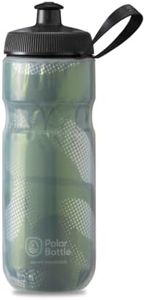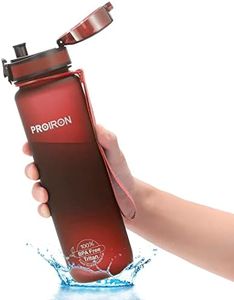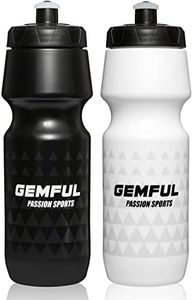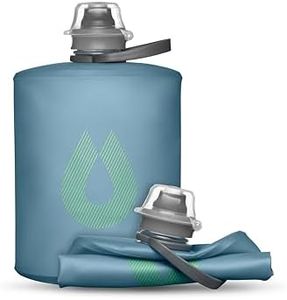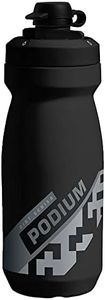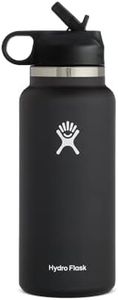We Use CookiesWe use cookies to enhance the security, performance,
functionality and for analytical and promotional activities. By continuing to browse this site you
are agreeing to our privacy policy
10 Best Cycling Water Bottles
From leading brands and best sellers available on the web.Buying Guide for the Best Cycling Water Bottles
When you're selecting a cycling water bottle, it's important to think about your riding style, how often you'll use the bottle, and what features matter most for your comfort and hydration. The right bottle will keep you hydrated, be easy to use while riding, and fit securely in your bike’s bottle cage. Understanding the key features will help you choose a bottle that meets your needs and supports a better cycling experience.Capacity (Volume)Capacity refers to how much liquid the bottle can hold. Bottles typically range from around 500 ml (16 oz) to 1000 ml (32 oz). Smaller bottles are lighter and fit most bike frames easily, making them great for short rides or those who prefer a minimal load. Larger bottles mean less frequent refills and are ideal for longer rides or hotter days, but they can be heavier and may not fit all bottle cages. To pick the right size, consider how far you usually ride and whether you have opportunities to refill along your route.
MaterialCycling bottles are most commonly made from plastic, though some are stainless steel or insulated. Plastic bottles are lightweight and squeezable, making it easy to drink on the go, while stainless steel bottles are more durable and can keep drinks cooler but tend to be heavier and less easy to drink from rapidly. Insulated bottles, which can be either plastic or metal, help maintain the temperature of your drink for longer periods, which can be useful in very hot or cold conditions. Think about whether keeping drinks cool, reducing weight, or durability is most important for your style of riding.
Nozzle/Cap TypeThe nozzle or cap is where you drink from, and its design affects ease of use, leak resistance, and cleaning. Common types include push-pull, bite valves, and twist lids. Push-pull tops are simple and quick for sipping while riding, bite valves often minimize leaking and are easy to use one-handed, while twist lids offer extra leak-proof security but may be slower to open. Choose a nozzle type that feels intuitive and convenient for you and fits how you drink while cycling.
Ease of CleaningSome bottles have simple designs with wide mouths and removable parts, making them easier to clean thoroughly and reducing the chance for mold or bacteria to build up. Bottles with complex valves or narrow openings require more effort and attention when cleaning. If you'll be using your bottle frequently, especially with sports drinks or flavored liquids, prioritize easy-to-clean designs for better hygiene.
Fit with Bottle CageNot all bottles fit all cages perfectly. Standard cycling bottles have a specific diameter and shape to fit securely in most cages, but some oversized or unusual bottles might be too snug or too loose. Make sure your bottle will fit securely in your bike’s cage so it doesn’t rattle or fall out during your ride. If you have a smaller bike frame, also consider the bottle’s height and shape.
Grip and SqueezabilitySome bottles feature textured surfaces or flexible materials to make them easier to grip and squeeze while riding—especially when your hands are sweaty or gloved. Squeezable bottles are preferred by many cyclists for quick one-handed use. Think about your hand size and strength, and if you often ride in hot or challenging conditions, opt for a bottle with good grip and squeezability for convenience and safety.
